Contents
- Disaster and effects
- Russo-Ukrainian War
- Places and geography
- Power plant
- Exclusion zone
- Other
- Media
- Non-fiction
- Fiction
- Organizations
- People
- Other 2
- See also
- References




This is a list of Chernobyl-related articles.




This is a list of Chernobyl-related articles.

Chernobyl or Chornobyl is a partially abandoned city in the Chernobyl Exclusion Zone, situated in the Vyshhorod Raion of northern Kyiv Oblast, Ukraine. Chernobyl is about 90 kilometres (60 mi) north of Kyiv, and 160 kilometres (100 mi) southwest of the Belarusian city of Gomel. Before its evacuation, the city had about 14,000 residents. While living anywhere within the Chernobyl Exclusion Zone is technically illegal today, authorities tolerate those who choose to live within some of the less irradiated areas, and around 1,000 people live in Chernobyl today.

Pripyat, also known as Prypiat, is an abandoned city in northern Ukraine, located near the border with Belarus. Named after the nearby river, Pripyat, it was founded on 4 February 1970 as the ninth atomgrad to serve the nearby Chernobyl Nuclear Power Plant, which is located in the adjacent ghost city of Chernobyl. Pripyat was officially proclaimed a city in 1979 and had grown to a population of 49,360 by the time it was evacuated on the afternoon of 27 April 1986, one day after the Chernobyl disaster.
Igor Fedorovich Kostin was one of the five photographers in the world to take pictures of the Chernobyl nuclear disaster near Pripyat in Ukraine, on 26 April 1986. He was working for Novosti Press Agency (APN) as a photographer in Kyiv, Ukraine, when he represented Novosti to cover the nuclear accident in Chernobyl. Kostin's aerial view of the Chernobyl nuclear power plant was widely published around the world, showing the extent of the devastation, and triggering fear throughout the world of radioactivity contamination the accident caused, when the Soviet media was working to censor information regarding the accident, releasing limited information regarding the accident on 28 April 1986, until the Soviet Union's collapse in 1991.

The Chernobyl Nuclear Power Plant Zone of Alienation is an officially designated exclusion zone around the site of the Chernobyl nuclear reactor disaster. It is also commonly known as the Chernobyl Exclusion Zone, the 30-Kilometre Zone, or The Zone.

The Chernobyl Nuclear Power Plant is a nuclear power plant undergoing decommissioning. ChNPP is located near the abandoned city of Pripyat in northern Ukraine, 16.5 kilometers (10 mi) northwest of the city of Chernobyl, 16 kilometers (10 mi) from the Belarus–Ukraine border, and about 100 kilometers (62 mi) north of Kyiv. The plant was cooled by an engineered pond, fed by the Pripyat River about 5 kilometers (3 mi) northwest from its juncture with the Dnieper.

The Chernobyl disaster began on 26 April 1986 with the explosion of the No. 4 reactor of the Chernobyl Nuclear Power Plant, near the city of Pripyat in the north of the Ukrainian SSR, close to the border with the Byelorussian SSR, in the Soviet Union. It is one of only two nuclear energy accidents rated at seven—the maximum severity—on the International Nuclear Event Scale, the other being the 2011 Fukushima nuclear disaster in Japan. The initial emergency response and subsequent mitigation efforts involved more than 500,000 personnel and cost an estimated 18 billion roubles—roughly US$68 billion in 2019, adjusted for inflation. It is considered the worst nuclear disaster in history.
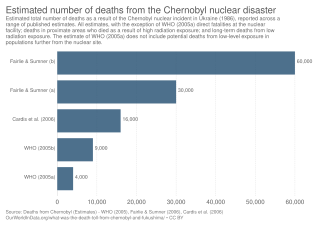
The 1986 Chernobyl disaster triggered the release of radioactive contamination into the atmosphere in the form of both particulate and gaseous radioisotopes. As of 2022, it was the world's largest known release of radioactivity into the environment.

Chernobyl liquidators were the civil and military personnel who were called upon to deal with the consequences of the 1986 Chernobyl nuclear disaster in the Soviet Union on the site of the event. The liquidators are widely credited with limiting both the immediate and long-term damage from the disaster.
The Chernobyl disaster is the world's worst nuclear accident to date.
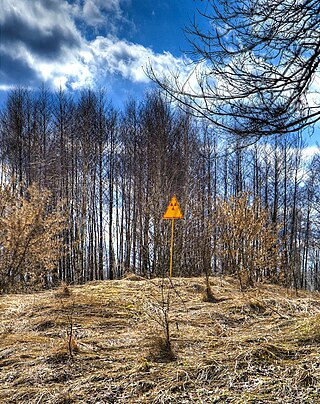
The Red Forest is the ten-square-kilometre (4 sq mi) area surrounding the Chernobyl Nuclear Power Plant within the Exclusion Zone, located in Polesia. The name "Red Forest" comes from the ginger-brown colour of the pine trees after they died following the absorption of high levels of ionizing radiation as a consequence of the Chernobyl nuclear disaster on 26 April 1986. In the post-disaster cleanup operations, the Red Forest was bulldozed and buried in "waste graveyards"; the site remains one of the most contaminated areas in the world today.
Mykola Mykolayovych Melnyk, also known as Nikolai Melnik, was a Soviet-Ukrainian pilot and liquidator hero renowned for his high-risk helicopter mission on the dangerously-radioactive Chernobyl Nuclear Power Plant building immediately after the 1986 Chernobyl disaster.
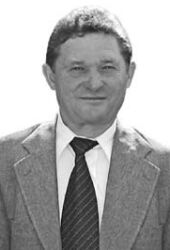
Leonid Petrovych Telyatnikov was a Soviet, and later Ukrainian, fire brigade commander notable for his role in directing the early stages initial response to the Chernobyl disaster. Telyatnikov served many years as an officer in both Soviet and Ukrainian firefighting organizations, working in a variety of junior and senior leadership positions throughout his career.

The Order for Courage is a Ukrainian award established by Ukrainian president Leonid Kuchma on August 21, 1996. Design by Ukrainian artist Mykola Lebid.
The Chernobyl disaster, considered the worst nuclear disaster in history, occurred on 26 April 1986 at the Chernobyl Nuclear Power Plant in the Ukrainian Soviet Socialist Republic, then part of the Soviet Union, now in Ukraine. From 1986 onward, the total death toll of the disaster has lacked consensus; as peer-reviewed medical journal The Lancet and other sources have noted, it remains contested. There is consensus that a total of approximately 30 people died from immediate blast trauma and acute radiation syndrome (ARS) in the seconds to months after the disaster, respectively, with 60 in total in the decades since, inclusive of later radiation induced cancer. However, there is considerable debate concerning the accurate number of projected deaths that have yet to occur due to the disaster's long-term health effects; long-term death estimates range from up to 4,000 for the most exposed people of Ukraine, Belarus, and Russia, to 16,000 cases in total for all those exposed on the entire continent of Europe, with figures as high as 60,000 when including the relatively minor effects around the globe. Such numbers are based on the heavily contested linear no-threshold model.
Volodymyr Pavlovych Pravyk was a Soviet firefighter notable for his role in directing initial efforts to extinguish fires following the Chernobyl Disaster. Following the event, he was hospitalized with acute radiation syndrome and died sixteen days later. He was posthumously awarded the Hero of the Soviet Union and the Order of Lenin by the Soviet Union, and later the Ukrainian Star For Courage in recognition of his efforts.
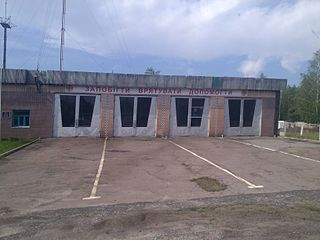
Vilcha is an abandoned settlement and former urban-type settlement in the Chernobyl Exclusion Zone, part of Vyshhorod Raion, Kyiv Oblast, Ukraine.
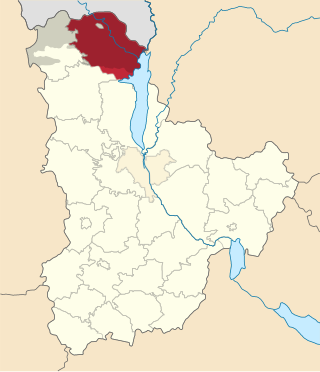
Chernobyl Raion or Chornobyl Raion was a raion in the Soviet Union located in the Ukrainian Soviet Socialist Republic. It was one of 26 administrative raions (districts) of Kyiv Oblast in northern Ukraine. After the Chernobyl disaster, the majority of the raion was contaminated, and many of its populated places were included into the Chernobyl Exclusion Zone, which is an officially designated exclusion area around the site of the disaster.
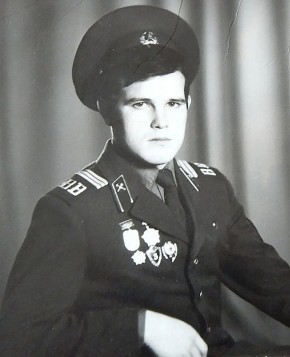
Vasily Ivanovich Ignatenko was a Soviet firefighter who was among the first responders to the Chernobyl disaster. He worked as an electrician before being conscripted into the Soviet Armed Forces in 1980, where he completed his two years of service as a military firefighter. Afterwards, he took up employment as a paramilitary firefighter with Fire Brigade No. 6, which was based out of Pripyat. On 26 April 1986, Ignatenko's fire brigade was involved in mitigating the immediate aftermath of the Chernobyl disaster; fighting the fires that broke out following the initial explosion of Reactor 4 at the Chernobyl Nuclear Power Plant. While on site, Ignatenko received a high dose of radiation, leading to his death at a radiological hospital in Moscow eighteen days later.
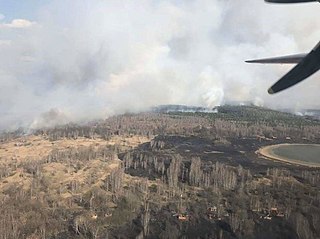
The 2020 Chernobyl Exclusion Zone wildfires were a series of wildfires that began burning inside Ukraine's Chernobyl Exclusion Zone in April 2020. The fires were largely extinguished within two weeks. At least one suspect was arrested for alleged arson.

Chernobyl: Abyss, also titled Chernobyl 1986, is a 2021 Russian disaster film directed by and starring Danila Kozlovsky. The film centres on a fictionalised firefighter who becomes a liquidator during the Chernobyl disaster. The film was released in Russia by Central Partnership on 15 April 2021, and was subsequently picked up by Netflix in July 2021.